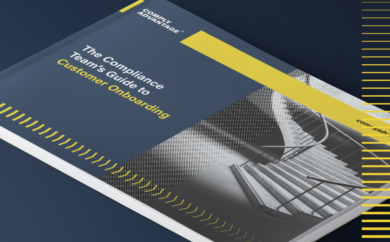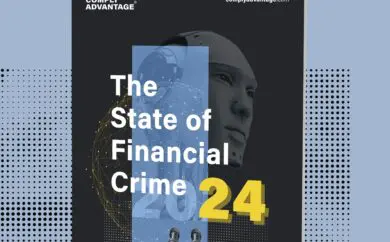As the regulatory and enforcement focus on money laundering and related financial crimes intensifies, adverse media screening can add immense value for banks. Effective adverse media screening demonstrates a bank’s strong commitment to responsible compliance and can result in substantial and direct benefits to the wider customer due diligence (CDD) program.
The benefits of adverse media screening
Adverse media or negative news screening is searching for information relevant to a customer’s AML/CTF risk profile. It is one of the best ways of building an accurate and precise profile of the counterparty risk for a bank while anticipating potential future threats. Configuring a system that supports both a bank’s business goals and compliance obligations while synchronizing with existing internal tools also improves overall operational efficiency.
A bank cannot manually check thousands of news stories every day in multiple languages. Compliance and AML professionals are painfully aware that manual checks can be time-consuming, costly, and ultimately frustrating. Using traditional unstructured adverse media databases and search engines means reading, digesting, and interpreting dozens of articles or more. Many will be duplicates or irrelevant and often unrelated to the subject. Ultimately, this leads to decisions being taken without the best available information.
Regulations
Regulatory bodies have emphasized the need to construct accurate risk profiles for banking clients despite differing AML regulations. They have made screening for negative media an essential legal requirement for know your customer (KYC) onboarding protocols, continued customer due diligence (CDD), and enhanced due diligence (EDD) on potentially high-risk customers.
In the United States, the Financial Crimes Enforcement Network (FinCEN) requires financial institutions to comply with the Bank Secrecy Act (BSA). Adverse media screening is also instrumental in supporting SAR filing.
The EU’s 6th Anti Money Laundering Directive (6AMLD) mandates banks to perform enhanced due diligence for high-risk customers. At the same time, Financial Action Task Force (FATF) guidelines recommend using adverse media searches as part of an enhanced due diligence process.
The pressure is on banks and all AML-regulated financial institutions to find more efficient and cost-effective ways to fulfill their regulatory obligations while alleviating pressure on budgets and maintaining customer satisfaction.
A risk-based approach
The FATF emphasizes the risk-based approach for mitigating money laundering risks, and under its guidelines, adverse media screening is an important way to help develop accurate customer risk profiles. Politically Exposed Persons (PEPs) and other higher-risk relations are better monitored and receive an extra layer of scrutiny.
Adverse media and AI
As a result, many firms are turning to innovative solutions to automate processes and reduce the manual and ineffective processes that still characterize many AML control frameworks in US banks and financial institutions.
Last year, the FATF published a significant report in this area called ‘Opportunities and Challenges of New Technologies for AML/CFT,’ setting out the case for investing in new technology to improve the speed, quality, and efficiency of measures to combat money laundering and terrorist financing. It states that these technologies can help financial institutions and supervisors assess the risks they face more accurately and quickly. When implemented using a risk-based approach, new technologies can also improve financial inclusion, bringing more people into the regulated financial system and thereby reinforcing the effectiveness of AML/CFT measures.
The business case and evidence for investing in new technology solutions have never been stronger, with new AI-based adverse media screening and ongoing monitoring solutions changing the onboarding landscape with real-time and dynamic customer profiling.
The new generation of adverse media screening solutions aims to provide a 360-degree view of customers across both individuals and legal entities. This creates a more rounded and informed view of potential risk during the assessment process with a more accurate risk score at the beginning of the customer relationship. It also ensures that ongoing monitoring is more focused on potentially riskier relationships, providing alerts in real-time should a risk profile change significantly.
Adverse media as an investment
Building a business case to support investment in AML systems has never been easy. Boards of directors tend to view AML compliance as a cost to the business as opposed to investing in anti-fraud solutions that can be more easily tied to the bottom line. However, there has been a marked increase in interest from boards and executives following several high-profile breaches, resulting in huge fines and considerable management time spent dealing with the fallout. Boards now accept that adverse media screening is essential to managing the spectrum of risks that a firm is exposed to. This is moving beyond the ‘established’ range of money laundering and terrorist financing risk into human trafficking, human rights abuses, modern slavery, and environmental crime. AI-based adverse media screening solutions can be trained to monitor all relevant risk areas in real-time if necessary.
Ease of integration and operational efficiency
The final puzzle to consider in the business case is the ease of integration and associated professional services costs. Integrating an adverse media solution into an existing workflow should maximize the operational efficiency of a bank’s risk mitigation program with minimal integration costs.
Using adverse media banks can radically improve their efficiency and effectiveness by viewing AML compliance not just as a regulatory requirement but as part of its core strategy to enhance competitiveness.
Celent report: Maximizing the Value of Adverse Media Monitoring
For this report, leading research and advisory firm Celent interviewed global banks from across the world, providing practical tips on how adverse media can be integrated into an existing AML value chain.
Download now
To explore more about the practical benefits of adverse media for compliance teams, explore the pieces below:
Footnotes:
- Cost of Compliance Report 2022: Officers face competing priorities & future planning – Thomson Reuters Institute
- https://www.fatf-gafi.org/publications/fatfrecommendations/documents/opportunities-challenges-new-technologies-for-aml-cft.html
- https://www.wolfsberg-principles.com/articles/publication-negative-news-screening-faqs






